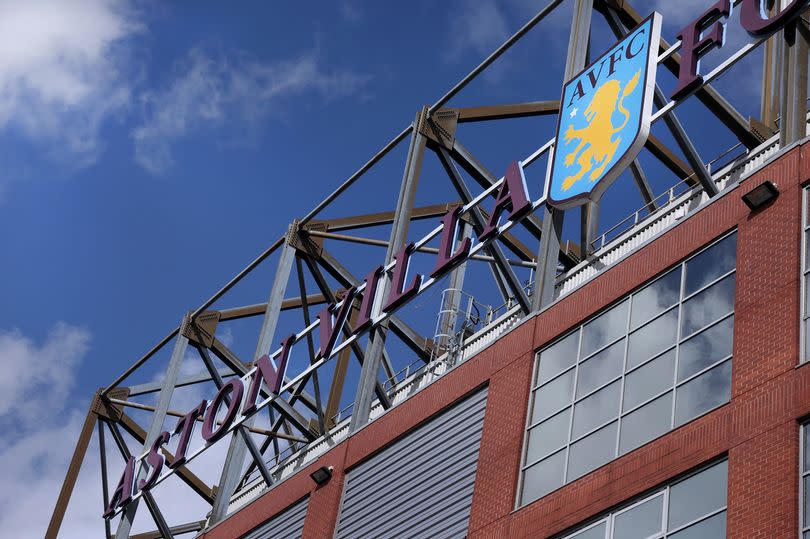Why Aston Villa may have opposed Premier League move Manchester City don't want

When the outcome of the Premier League’s most recent shareholders meeting was revealed on Monday there was some surprise regarding the stance of Aston Villa.
At the top of the agenda at the monthly meeting was the potential introduction of a salary cap in the Premier League, one that would be anchored to the sum received by the 20th-placed team in the league the previous year via central payments.
Central payments are worth huge sums to Premier League clubs, with the £10bn deal for domestic and overseas rights filtered down to clubs on a sliding scale through an equal share of both rights, as well as merit payments for both dependent on final position, facility fees dependent on the number of live games in which a team appears during a season, and commercial revenues.
The idea around the introduction of a salary cap was to try to stop the gap between the biggest sides and the rest growing even further and to slow the rate of increase seen in recent years where wage growth has often outpaced revenue growth for many clubs.
Late Monday afternoon the news started to filter out, as first reported by The Times, that 16 clubs had voted for an agreement in principle over a new cap, while one had abstained, which was Chelsea. Manchester City, Manchester United, and in what was a surprise to many, Villa, opted to vote against the proposals.
READ | Rebuilding Aston Villa: The four people NSWE have tasked with taking club to next level
READ | How Aston Villa can secure Champions League qualification this weekend
Manchester City’s reasons for voting against are pretty clear. They have the biggest wage bill, have huge revenue streams that beat all other Premier League clubs, and they are one of the few to turn a profit in the most recently published financial year of 2022/23. Why would they vote to harm their own growth prospects?
For Manchester United, while competitive success may have been lacking, they are a club with a mammoth wage bill, one that has been heavily tied in its volatility to bonus payments for such things as making the Champions League. They have been willing spenders in the market on wages, and at a time when other leagues such as La Liga and the Saudi Arabian Pro League won’t have the same financial controls to work within, they, like City, may feel that they are being put at a competitive disadvantage longer term, which could damage the Premier League’s lucrative brand globally, which is what drives the broadcast revenues that ultimately underpin its success.
Villa, on the face of it, may have seemed like one of the clubs, those with the ambition to break up the so-called ‘big six’, who would have welcomed fresh regulation that would impede the ability of the biggest sides to further stretch the gap.
But, according to well-placed sources, what had been initially reported as being the plan for a salary cap was actually different.
It had been suggested that a 4.5 multiple would be applied to the lowest revenue, which, for example, was Southampton last year with £103.6m. But the multiple that clubs have been now working towards is five times that, which on last year’s figures would be £518m, but with the amortisation charges and also agents fees included in that.
To put Manchester City’s stance into some context, Pep Guardiola’s side had wages of £423m in 2022/23, with amortisation costs of £145.4m, a combined £568.4m, above the £518m example, showing that the introduction of such a restriction would almost certainly limit their ability to continue to stretch the gap between themselves and their rivals.
In Villa’s case, using that £518m sum, they would be around £286.5m, still well under the cap itself. But with the introduction of a squad cost ratio rule akin to UEFA’s from 2025, to replace the current profit and sustainability rules, clubs would still be bound by having to stay within a 70% (if in Europe) or 85% (outside of European competition) ratio when wages, amortisation costs, severance costs, and agents fees were calculated against operating revenue and player trading profit. It doesn’t give carte blanche to clubs with salary cap room to spend.
Villa’s owners V Sports have big ambitions for the club, and part of that ambition requires the Premier League to continue on its growth trajectory. The introduction of a salary cap, at a time when other established major leagues, and emerging leagues such as Saudi, will have the ability to acquire the best talent without such a hard cap, could eventually erode the Premier League by it no longer being where the very best players exist, where the likes of Kylian Mbappe wouldn’t be playing because there was no team of the appropriate size with the available salary room for such an addition.
The sometimes uncomfortable truth is that the value that clubs derive from the broadcast rights domestically, and ever more importantly from the international markets such as the USA, is driven by the ability of the biggest three or four clubs to be compelling on a global scale by having the best talent available playing for their clubs.
A salary cap being imposed would be of greater benefit to the likes of Liverpool, Arsenal, and Tottenham Hotspur, clubs run in different way to the likes of Manchester City and Manchester United, because it would force City to think about pumping the brakes a little, while they have some room to play catch up.
For Villa, it won’t address the imbalance in terms of resources, but it could have longer-term implications for the value proposition of the Premier League, and with new financial controls imminent, that has likely been something that has emboldened the club to reject the current proposals, which will still need to be ratified at the Premier League’s AGM this summer.

 Yahoo News
Yahoo News 
